-
The Future
-
AX(AI Transformation)
AX(AI Transformation)While many technological innovations have transformed enterprise work environments, none have brought change as profound as artificial intelligence (AI). In today’s business landscape, AI is no longer just another technology, it has become a driving force behind fundamental business transformation. In a future shaped by agentic AI and AX, only companies that work with partners offering visionary leadership and innovative technologies will secure lasting competitiveness.
-
AX(AI Transformation)
-
Services
-
IT Infrastructure on Cloud
IT Infrastructure on CloudIT Infrastructure on Cloud strategy! Build a better business by leveraging all of these technologies.Cloud
- # Cloud Migration Roadmap
- # Multi-Cloud Enablement
- # Cloud-Native Adoption
- # AI Strategy on Cloud
- # Cloud Cost Optimization
Infrastructure- # Hybrid Cloud
- # Multi-Infrastructure Ops
- # AI Infrastructure Setup
- # Industry-Specific 5G
- # Flexible Infra Design
Data Center- # Data Center
- # DC Consulting Services
- # DC Deployment Considerations
- # DC Build & Operations
- # DC Total Lifecycle
Security- # Cybersecurity Consulting
- # Integrated Security Services
- # Custom Security Solutions
- # OT Security Implementation
- # Security Threat Management
-
AI
AIDiscover the most important driver of corporate innovation and the AI offering best suited to your business.Agentic AI
- # AgenticWorks
- # AI Orchestration
- # AI Partnership
- # AI Management
- # Integrated AI Services
AX Platform- # AX Platform Architecture
- # DAP GenAI Knowledge Lake
- # DAP GenAI Image/Text
- # DAP MLDL
- # DAP Vision
AX Consulting- # AI Strategy Consulting
- # Tailored AI
- # AI-Driven Process Innovation
- # AI Implementation Metrics
- # AI Governance
AICC- # AI Consultation Bot
- # Gen AI Consultation Service
- # Journey-Based Engagement
- # Cloud Contact Center
- # Contact Center Cost Saving
Virtual Factory- # Manufacturing Trends
- # Digital Twin Solutions
- # Digital Transformation
- # EPC Digital Transformation
- # CPM Deployment
-
Biz Data
Biz DataDeal with the fast-changing environment effectively with new business insights and a Gen AI Ready platform.
-
Biz Process Intelligence
Biz Process IntelligenceStart leading change by innovating how you work with more efficient and sustainable operations.Digital AX
- # Reinvent work with a:xink
- # Future of Work
- # AI-Driven Workplace Platform
- # Digital EX with AX
- # NEXT ITSM Solution
Sales & Customer Service Management- # AI Device Platform
- # AI Contact Center
- # Subscription Management
- # Converged MVNO Services
- # AI Product Management
Business Management- # AI Business Management
- # Business Mgmt Readiness
- # Equipment Efficiency
- # SPACE-N Solution
- # Business Support System
SCM- # SCM Strategy Planning
- # SCM Diagnosis Consulting
- # Demand-Driven Production
- # Supply Chain Planning
- # Vendor Management System
ESG- # Custom ESG Consulting
- # ESG Disclosure & Ratings
- # ESG Management Platform
- # Digital Safety System
- # Risk Monitoring Platform
-
Enterprise Solution
Enterprise SolutionTry out tech-focused business solutions that can improve every part of your work.ERP
- # Cloud ERP Migration
- # AI-Driven ERP PI
- # Next-Gen ERP
- # ERP Architecture
- # SAP ERP Operations
SINGLEX- # Global SCM Risk Control
- # HR Management Solution
- # AI for Manufacturing
- # AI Quality Management
- # AI-Driven CRM
Enteprise SW- # PerfecTwin Test Automation Solution
- # Web3 Adoption Strategy
- # Data-Driven Ad Operation
- # LENA Cloud Middleware Optimization
-
Customer Experience
Customer ExperienceProviding consistent and empathetic experiences throughout the customer journey with AI and data-driven personalized services.
-
Smart Factory
Smart FactoryExperience sustainable growth by applying AX to all manufacturing processes, including product development, process management, and production logistics.Manufacturing Execution Management
- # MES Data Integration
- # MMD Efficiency Enhancement
- # Expected MES Outcomes
- # Real-Time Process Monitoring
- # WMS Optimization Strategy
Process Management- # Recipe Management System
- # Productivity & Quality Boost
- # Quality Issue Management
- # Process Anomaly Detection
- # Real-Time Anomaly Alert
Production Logistics Management- # Smart Factory Logistics
- # Real-Time Dispatcher
- # Process Computerization
- # DAQ System
- # Digital Twin for Facilities
Product Development Management- # PLM Platform Adoption
- # Collaborative Dev Environment
- # Digital Design Platform
- # Optimized R&D Environment
- # Software-Defined Vehicle
-
Smart Logistics
Smart LogisticsDiscover smart logistics that evolve on their own through total solutions that cover the entire process from design to operation.
-
Smart City & Space
Smart City & SpaceExplore a new paradigm for future spaces that offer a better life, focusing on mobility and data.
-
Consulting
ConsultingConsulting services that drive customer innovation and growth, delivering tangible value.
-
Industry-Specific Services
Industry-Specific ServicesFinance
- # Card All-in-One Solution
- # Digital Banking
- # Custom Insurance Service
- # Advanced Insurance System
- # Tokenized Securities Platform
Education- # AI Language Education
- # AI Tutor Solution
- # EdTech Service Deployment
- # AI Digital Textbook
- # Personalized Learning Content
Public Services- # Mobile ID Service
- # Decentralized ID Use Case
- # E-Wallet Service
- # ID Verification Service
- # Mobile ID Fraud Prevention
Oil&Gas and Petrochemical- # AX Strategy
- # Digitalizing Manufacturing
- # Factory Operations Optimization
- # Industry-Specific AI Service
- # ESG Management
Pharmaceutical and Biotech- # Pharma/Bio AX Strategy
- # R&D Innovation
- # Digitalized Manufacturing
- # Smart Logistics Automation
- # AI Safety & Compliance
-
IT Infrastructure on Cloud
- The Future
-
Services
IT Infrastructure on CloudBiz DataBiz Process IntelligenceEnterprise SolutionCustomer ExperienceSmart FactorySmart LogisticsSmart City & SpaceConsultingIndustry-Specific Services
No search results found.
AI
AX PlatformThe rapid advancement of generative artificial intelligence (AI) is driving innovation across all areas of business operations. As a result, AI Transformation (AX) has become a core strategy for enterprise growth.
AX platform has evolved beyond a development tool into an integrated infrastructure that accelerates AI adoption across the business. From data collection and management to services and operations, AI projects are becoming increasingly complex, with more factors that need to be taken into account. As a result, the role of the platform in systematically addressing these complexities continues to grow.
As more businesses seek to apply AI across various functions, technologies such as multimodal learning, Retrieval-Augmented Generation (RAG), and vector Databases (DB) are advancing rapidly. These technologies enable enterprises to effectively connect complex data with diverse business requirements, delivering tangible business outcomes.
The AX platform supports the full AI service lifecycle from development and deployment to operations and management within a unified environment, maximizing efficiency and stability across enterprise initiatives.
It ensures consistent management and utilization of AI assets, helping clients rapidly adopt generative AI services. Even in distributed environments, the platform offers integrated security and governance to minimize risk.
With a flexible architecture, it adapts to new technologies and ensures scalable, efficient operations across on-premises and cloud systems. This enables companies to fully realize the value of AI and drive sustainable innovation.
Generative AI goes beyond text generation. It is now a core technology transforming how businesses operate and engage with customers.
On the AX platform, Generative AI boosts productivity and efficiency across various functions. Combined with technologies like multimodal learning, RAG, and vector DB, it enables advanced features such as knowledge-based responses and content generation. The AX platform provides a reliable foundation for building and operating these capabilities, delivering tangible outcomes that turn AI into business competitiveness.
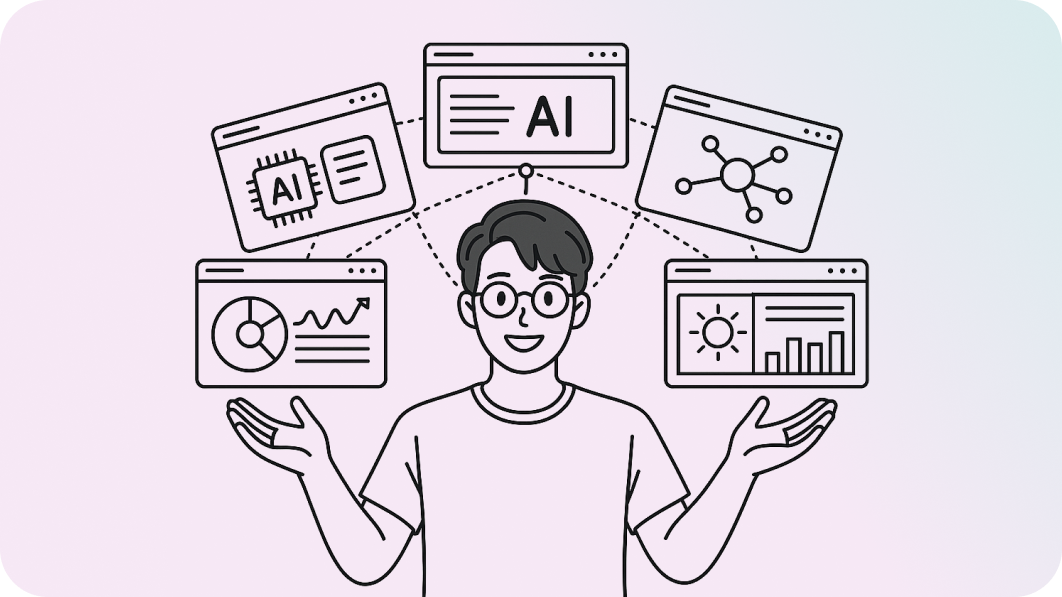
Faster, Simpler AI Service Development
LG CNS’s AX platform provides an all-in-one environment for developing and managing AI services across domains such as text, knowledge, and images. With Prompt templates, prebuilt AI modules, and an intuitive UI, non-experts can easily create services. The complex model setup and deployment process is automated, greatly lowering the entry barrier.
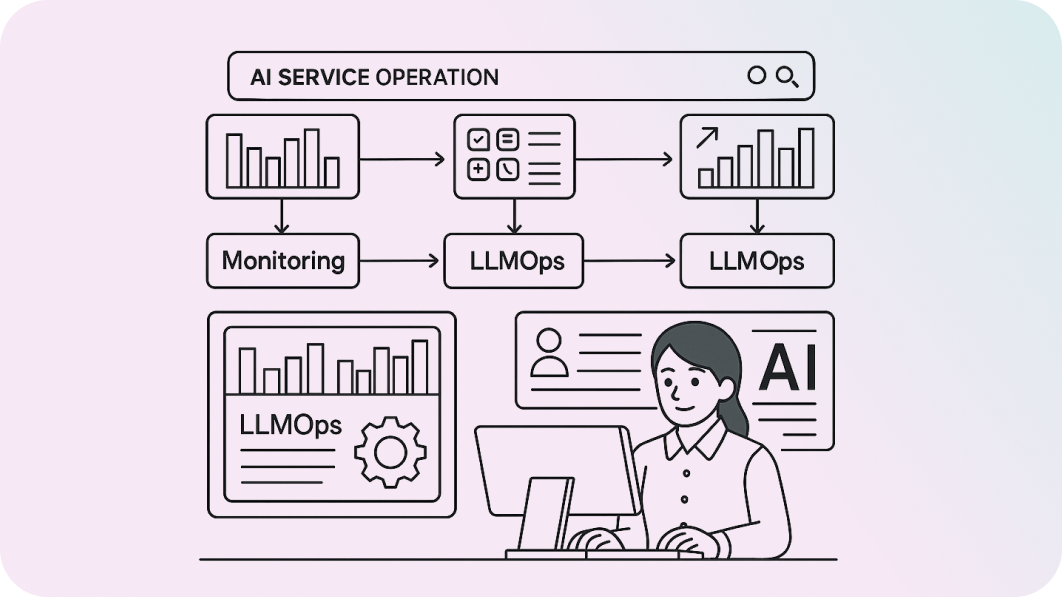
Systematic AI Service Operations
AI services require more than just development. They need stable and sustainable operations. LG CNS’s AX platform provides integrated features such as monitoring, LVMOps, and LLMOps to minimize the operational burden after deployment. It also offers a governance framework to securely manage information assets across the enterprise.
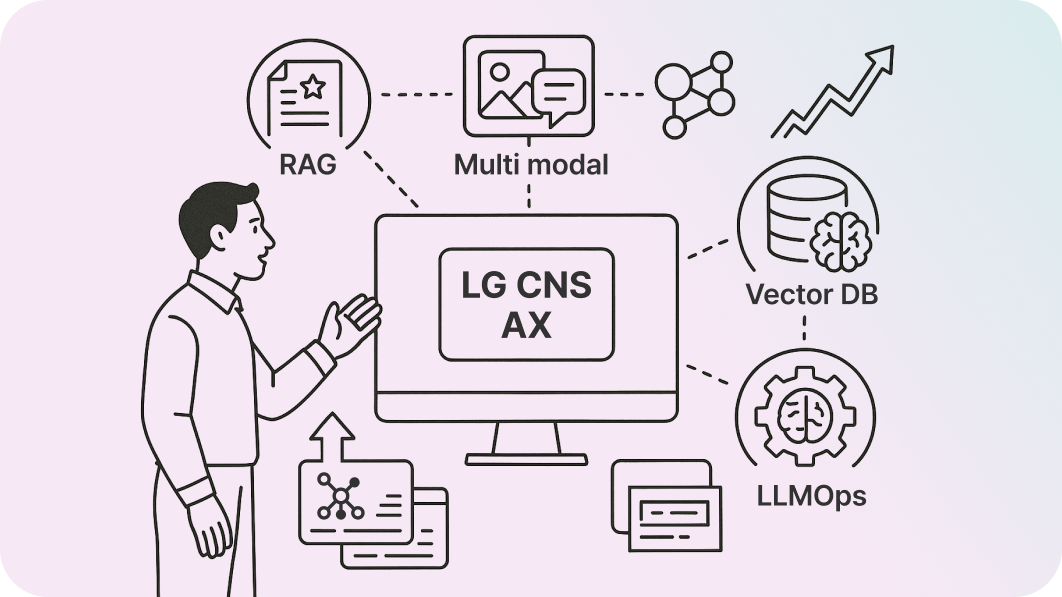
Fast Adoption of Various Emerging Technologies
As generative AI technologies rapidly evolve, including multimodal learning, RAG, vector DB, and LLMOps, LG CNS’s AX platform helps companies quickly internalize these new technologies and implement them as customized solutions. This allows businesses to adopt new technologies faster and continuously strengthen their competitiveness.
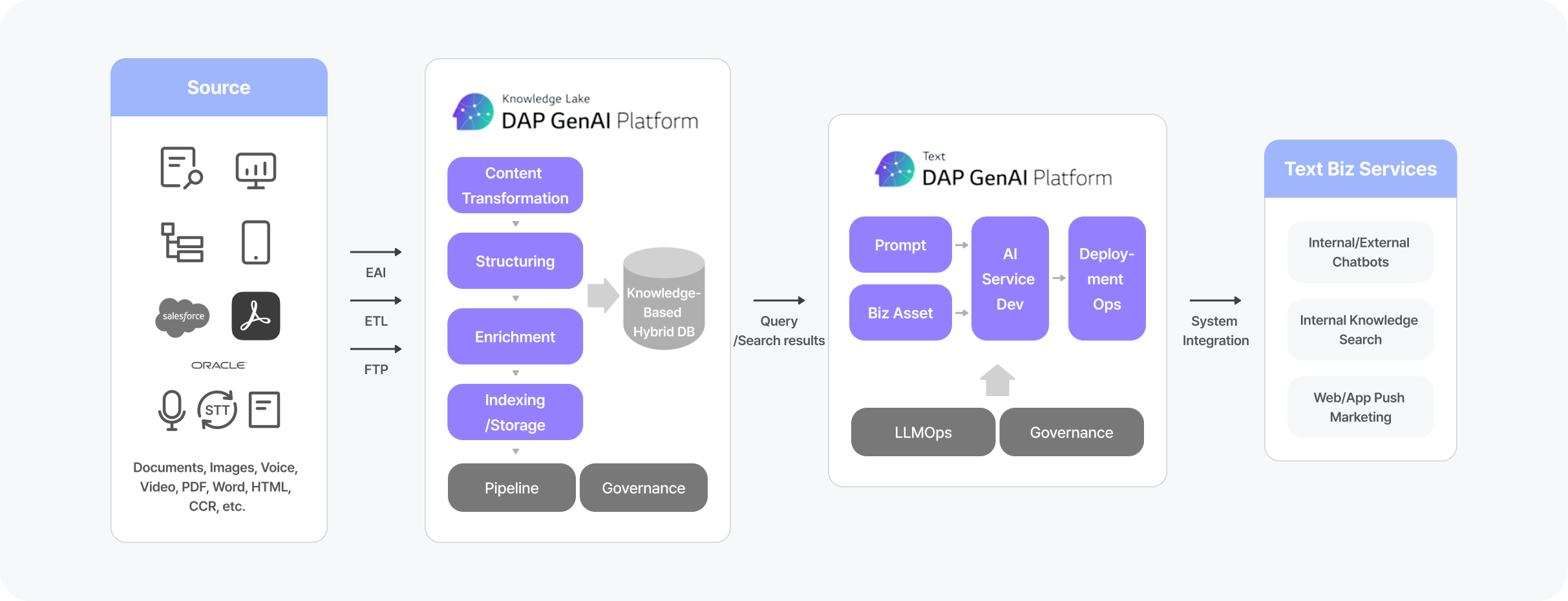

DAP GenAI Knowledge Lake is a knowledge repository built on the AX platform. It helps unify fragmented enterprise information into structured, meaning-based knowledge and supports systematic management and utilization. It transforms large volumes of documents into knowledge through optimized pipelines and applies governance that spans security, access control, and standards. By using advanced search technologies and large language models, it provides accurate answers that can be used directly in business tasks. This enables seamless integration of enterprise knowledge and accelerates AI based business innovation.
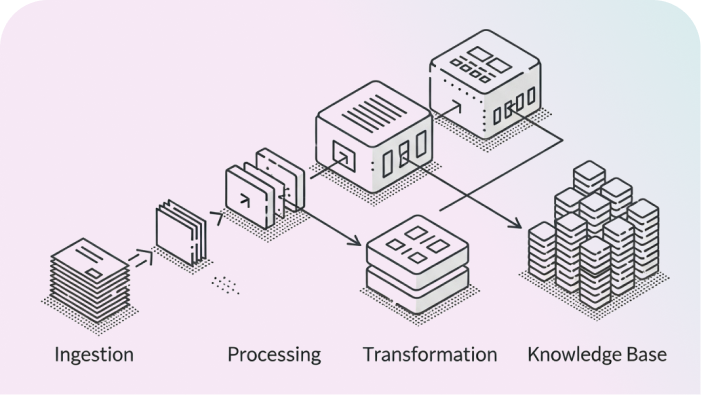
Transforms large volumes of documents into knowledge using optimized pipelines
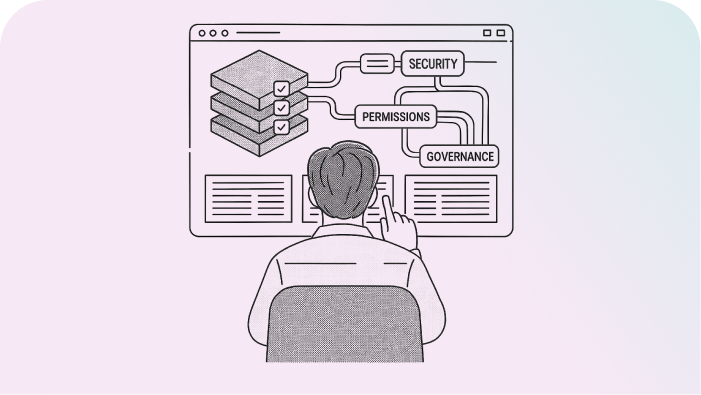
Monitors the application and usage of governance policies, including security, access control, and standards.

Provides answers using vector and hybrid search along with various LLM models.
DAP GenAI Image is a platform that enables fast and easy creation and editing of enterprise image content based on image generation AI technology. It uses multimodal technology to understand and process various types of data such as text and images, supporting the generation of content for marketing, product design, and more. In addition, it allows companies to fine-tune models using their own images and manage outputs for more precise business use.

Generates and edits target images using customized AI models.
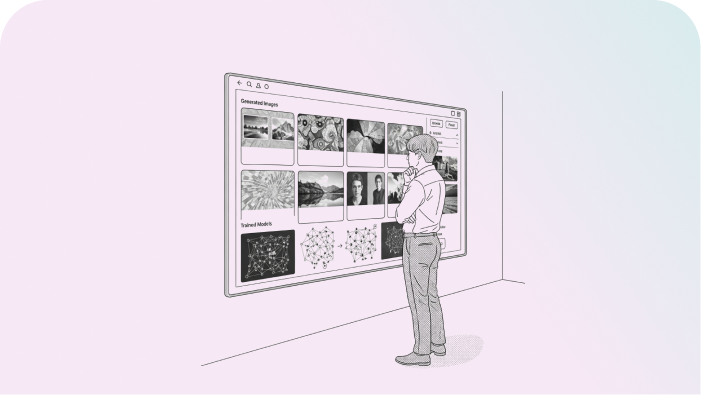
Shares generated images and trained models for browsing and creating new images.

Fine-tunes AI models using image data owned by the enterprise.
DAP GenAI Text is an AX platform for developing and deploying language generation AI services such as document summarization and report writing.
It offers features like ‘AI Prompt’ for experimenting with various LLMs, ‘AI Service’ with built-in scenarios, and ‘LLMOps’ for fine-tuning both OSS and owned models to fit enterprise needs. It also includes ‘Enterprise Fit Governance’ to support policy enforcement and enterprise-grade compliance.
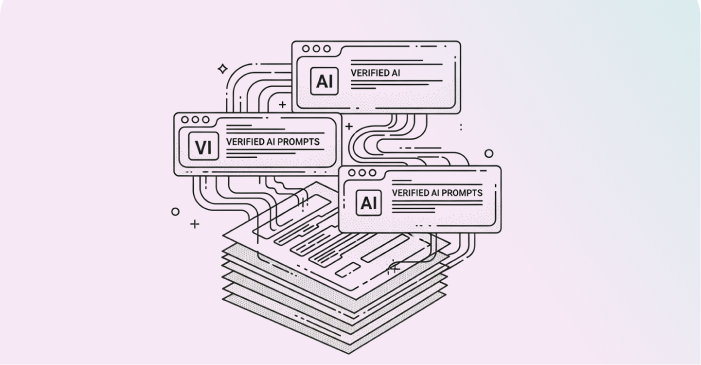
Provides validated prompt templates by type and allows sharing across the organization, projects, and other users.

Enables easy creation and deployment of LLM services through a Low Code Graphical User Interface (GUI).
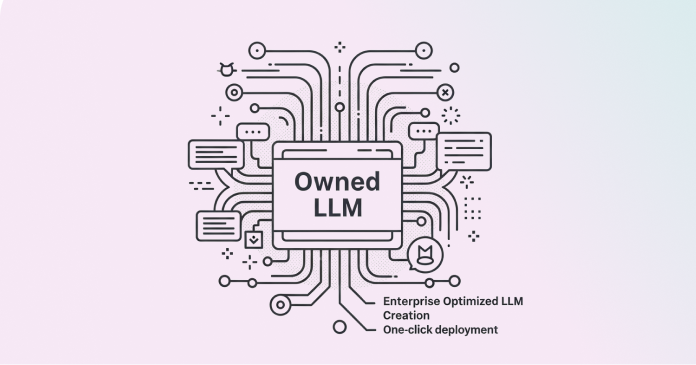
Generates and deploys enterprise-optimized LLMs using owned models, with one-click deployment.
DAP MLDL (Machine Learning·Deep Learning) is an enterprise-level AI analytics platform that enables anyone to easily analyze data and build AI models. It provides integrated management of the full AI lifecycle including data collection, analysis, training, model creation, deployment, operation, and monitoring.

Provides a low-code analytics environment through GUI.
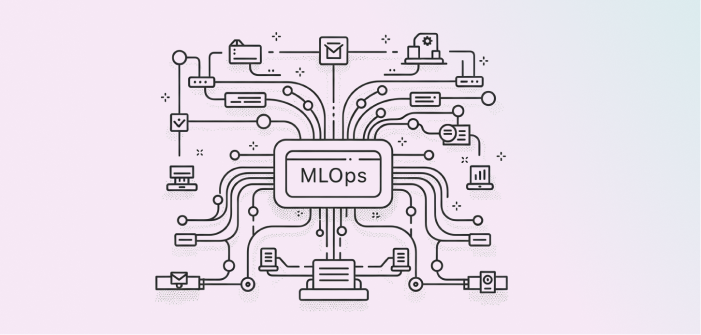
Supports stable large-scale and real-time inference based on strong governance.
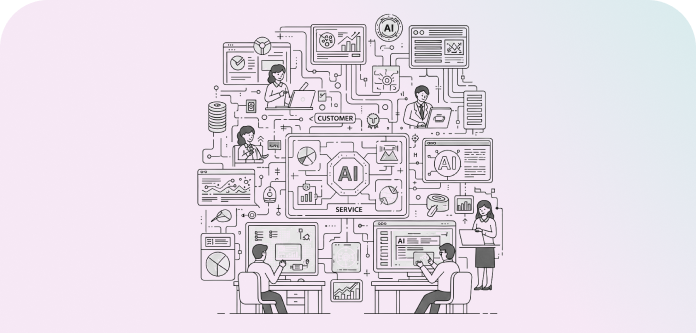
Delivers world-class AI services backed by extensive experience gained from serving the largest client base in Korea.
DAP Vision is a platform based on visual deep learning that enables the easy and fast creation of visual models, helping enterprises apply AI to industrial environments. It supports the entire process from data processing and AI modeling to deployment and operation, enabling smarter workflows.

Manages the Full AI Lifecycle from training to inference, monitoring, and retraining.

Provides intuitive UI/UX and No-Code tools that allow business users to train models directly.
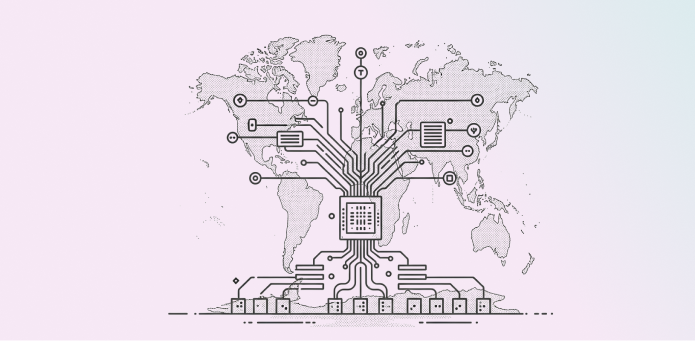
Supports large-scale, high-speed and real-time inference proven in global manufacturing environments.
-
Even when external LLMs are used, enterprise internal data is not exposed externally. It is securely managed through security and governance policies.
-
Hallucination, which refers to generative AI producing false or distorted content, is resolved by leveraging internal information assets such as client-owned documents and data.
-
Yes. The AX platform offers an intuitive GUI and in-house generative AI models, enabling non-developers to easily create desired outputs without complex technologies. Business users in planning, marketing, and operations can directly use the platform to increase productivity.
-
The AX platform is designed to flexibly support cloud, on-premises, and hybrid environments, enabling clients to implement and operate it according to their environment.
LG Science Park, E13/E14, 71 Magokjungang 8-ro, Gangseo-gu, Seoul, Republic of Korea
©LG CNS. All rights reserved.
LG CNS Cookies
We use cookies to provide you with a convenient web browsing
experience and to continuously improve functionality through traffic
analysis.
By clicking
‘Accept all cookies’,
you agree to our use of cookies. Click
‘Reject all cookies’
to decline all non-essential cookies. See
Privacy Policy
for details.


